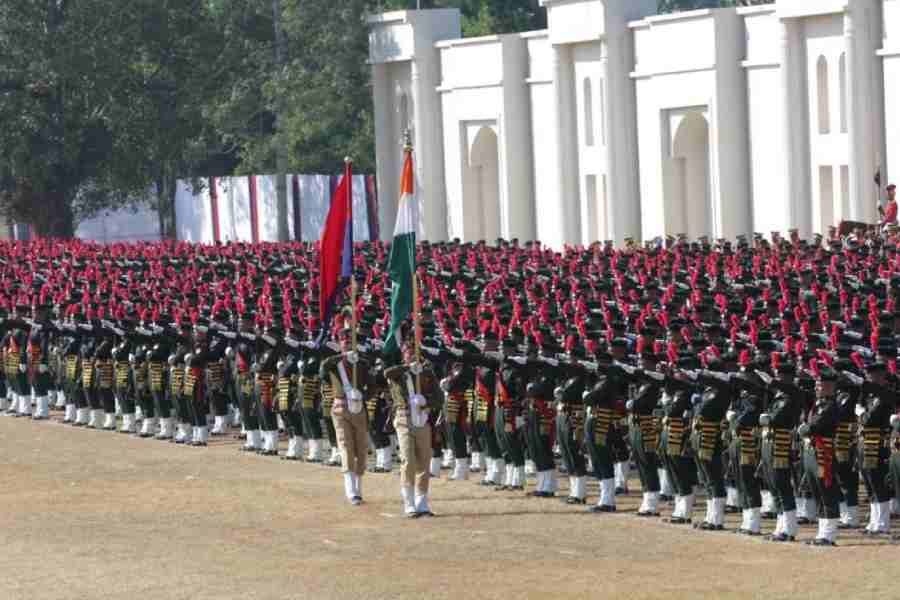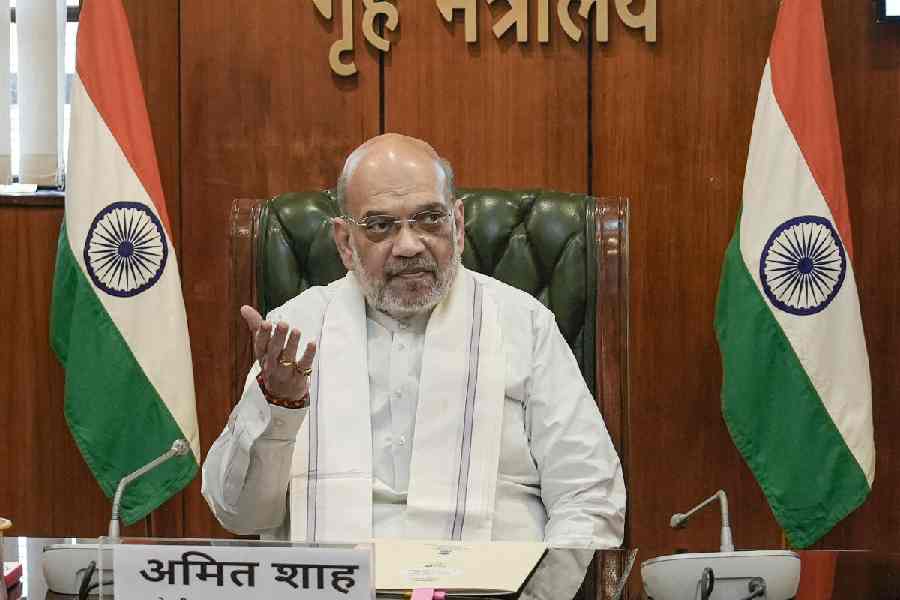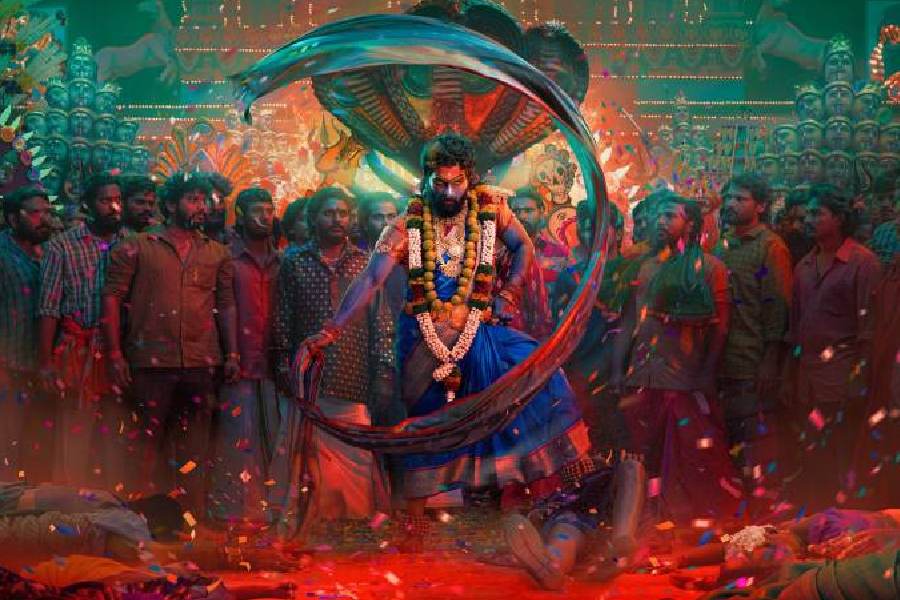A haunted mansion. An ancient relic with malevolent powers. A series of unexplained murders. A shape-shifting ghost. Typewriter, the latest from Netflix’s bouquet of Indian originals, has all the right ingredients needed for a chill-and-thrill watch. That it’s helmed by Sujoy Ghosh — who’s earned his stripes with bonafide thrillers like Kahaani and Badla — and shot and set in the countryside of Goa that contributes indelibly to the show’s atmospherics, make it largely gripping. t2 had access to the five-part series before it drops on Netflix this weekend. Our verdict? With an ample dose of jump scares, an engaging story and some uninhibited performances, Typewriter is a fairly well-made series that will make you bite your nails. That is, when you aren’t jumping out of your skin!
The story
Type writer meshes thrill and horror, a murder mystery and a story rooted in folklore. The first few minutes — set in the 1980s in the sprawling Bardez Villa in Goa — are chilling and set the tone for the rest of the series. The opening sequence is clearly inspired by a popular YouTube horror short named Tuck Me In. Thankfully, the rest of Typewriter looks and feels original, with Sujoy bringing in his trademark touches — taut scenes and tension-imbued atmosphere, tempered with a lightness of touch.
Typewriter jumps from the ’80s to the present day with a family of four driving in to stay at Bardez Villa, a now-abandoned mansion that local residents are certain is haunted. That the mother Jenny (Palomi Ghosh) is the granddaughter of the original owner — Madhav Mathews (Kanwaljit Singh), a writer of ghost stories — gives the narrative some perspective. Jenny lived in the villa as a child but has little memory of it and when her husband Peter Fernandes (Samir Kochhar) takes up a job, the family — including son Nick and daughter Anya — decides to give up the chaos of Mumbai for idyllic Goa.
The central ‘protagonist’ of the story is an old typewriter that Madhav Mathews would hammer away at to churn out his horror pieces and which now lies in the attic of Bardez Villa. Anya takes a fancy to the rickety typewriter and places it back in Madhav’s study… and that’s when the family’s troubles begin.
Typewriter starts out with promise, especially in the way it builds the story and outlines its central characters. There are quite a few characters and some overlapping narratives, but Sujoy manages to craft an interesting build-up that makes the viewer constantly wonder, ‘What now?’ The series truly comes into its own in Episode 3 when the horror of the present is connected with the happenings of the past, with Madhav Matthews’ book ‘The Ghost of Sultanpore’ playing an important role in taking the story forward.
The plot derails somewhat in the last two episodes, with the show focusing too much on mumbo-jumbo and introducing at least one unneccesary character, but Sujoy pulls it back in time to end on a thrilling note, setting things up nicely for Season 2.
The players
The Fernandes family apart, Ravi Anand (Purab Kohli), a local cop who gets embroiled in the Bardez horror story, is a principal player. So is a mysterious figure called Amit Roy (Jisshu Sengupta), who is modelled on the lines of Kahaani’s Bob Biswas. At the core of Typewriter is a gang of schoolgoing kids. The self-styled ghostbusters — Sameera (Aarna Sharma), Gablu (Mikail Gandhi) and Bunty (Palash Kamble) who team up with young Nick Fernandes (Aaryansh Malviya) — are obsessed with the supernatural. And it’s their interest in the strange happenings at Bardez Villa and beyond — they often crack the clues, leaving the adults twiddling their thumbs — that makes Typewriter more than just a horror story. The roots of the four ‘find-outers’ lie in the amateur detective stories we grew up reading — Nancy Drew to Hardy Boys, Famous Five to Secret Seven — and gives Typewriter not just an edgy thrill but makes it a nostalgic ride.
While it’s the kids — particularly Aarna as the headstrong Sameera — who steal the show, a special word for Purab who brings a quiet dignity to his cop and Jisshu who scares with that chilling smile. The pick of the lot is Palomi Ghosh who makes the most of her well-written role, giving us a character we feel for and yet are wary of.
The setting
What Calcutta was to Kahaani, Goa is to Typewriter. Bardez Villa provides a chilling backdrop to the show’s supernatural occurrences and popular city leitmotifs like old churches, desolate graveyards and abandoned boats contribute to the spooky atmospherics. Calcutta man Gairik Sarkar’s lens beautifully captures the other side of Goa and also manages to find the scary in the seemingly mundane.
The chill and thrill
The atmospherics in Typewriter contribute not only visually but also dramatically and emotionally. The show adds a fresh twist to standard horror tropes — apparition in the mirror to evil doppelganger — with Bardez Villa, much like Hill House in The Haunting of Hill House, becoming almost a character itself. Fashioned in the mould of old-world thrillers, Typewriter scores as long as it keeps the jump scares coming thick and fast. And once you watch the show, you will definitely think of bolting the next time someone sticks out their hand in front of you!
- Typewriter streams on Netflix from July 19











